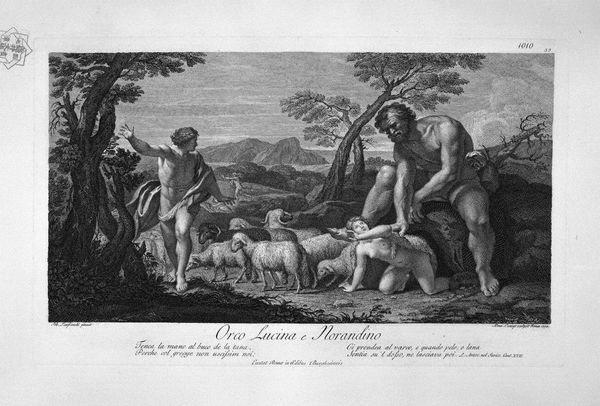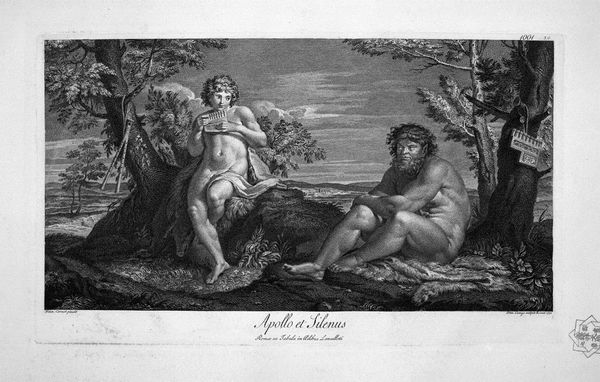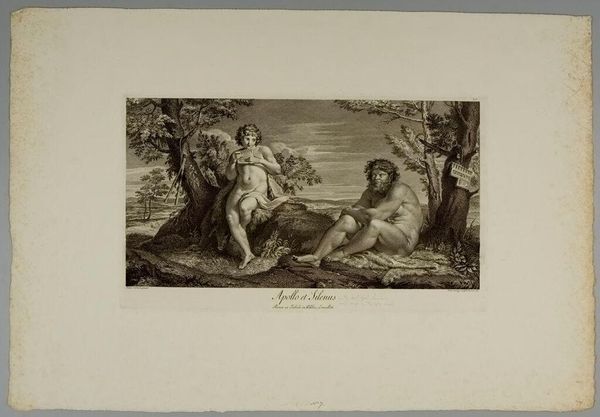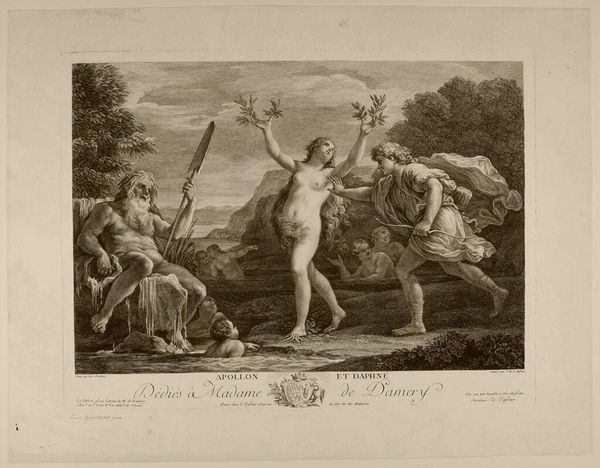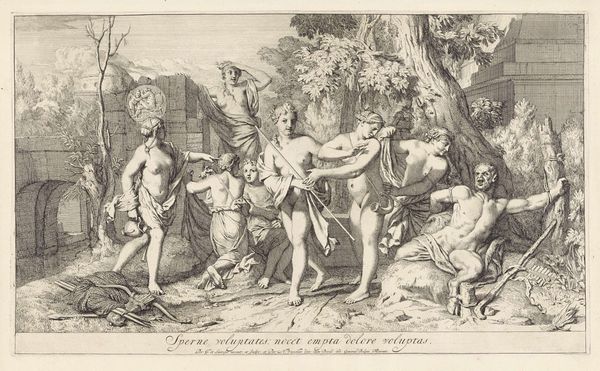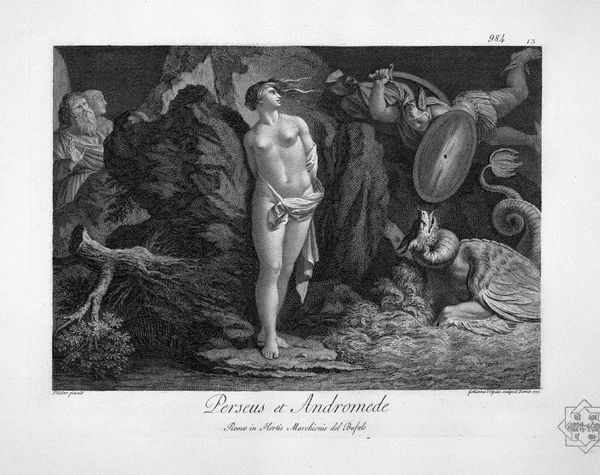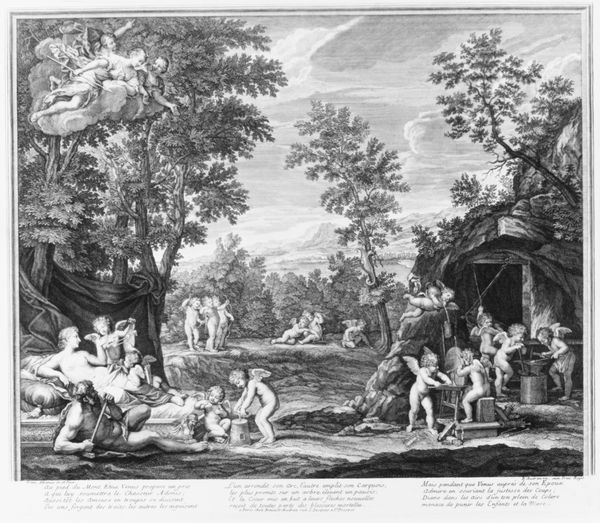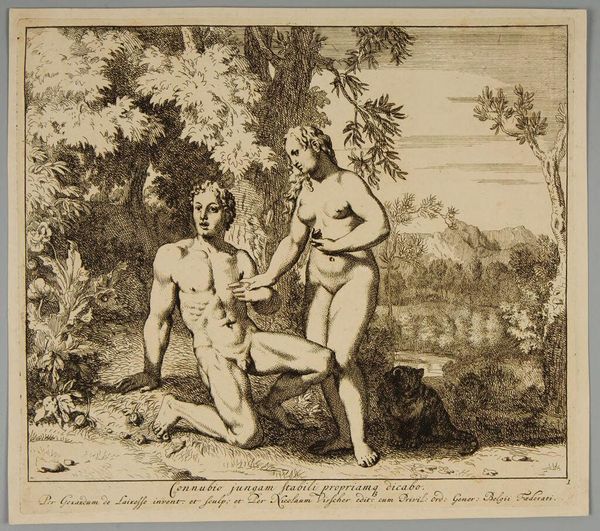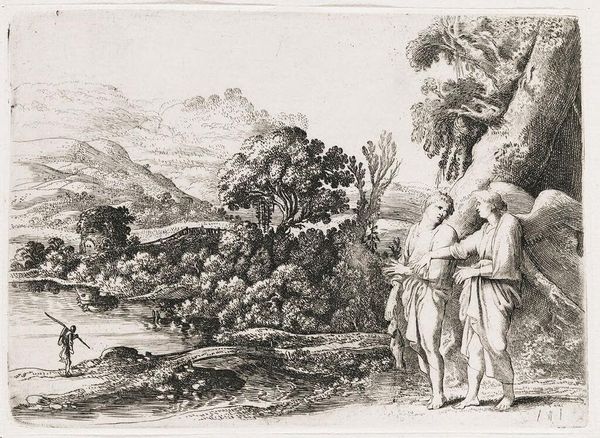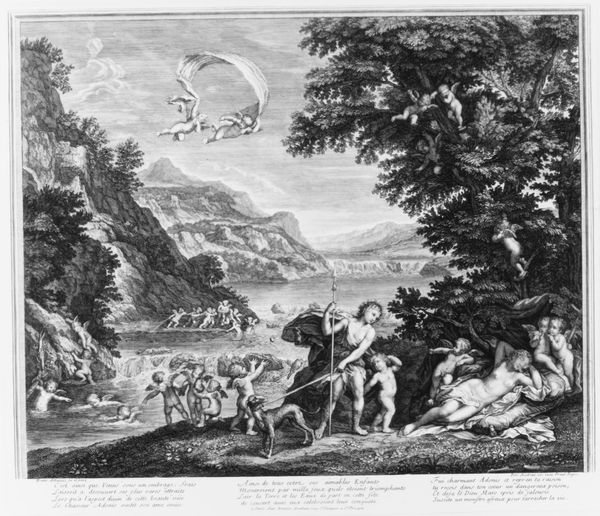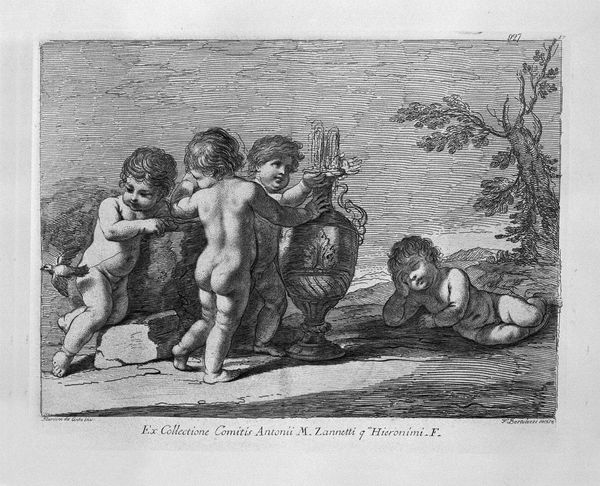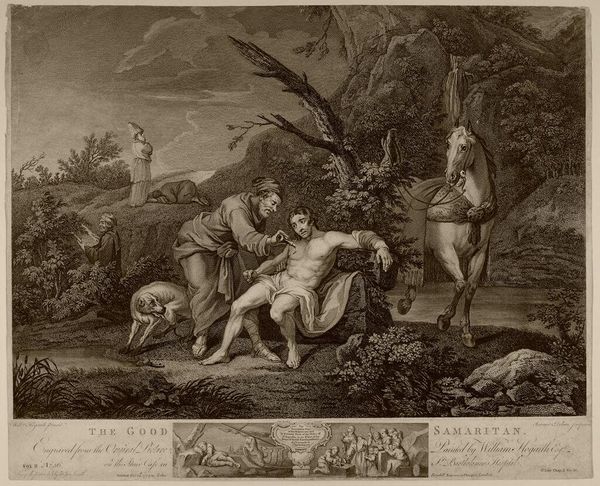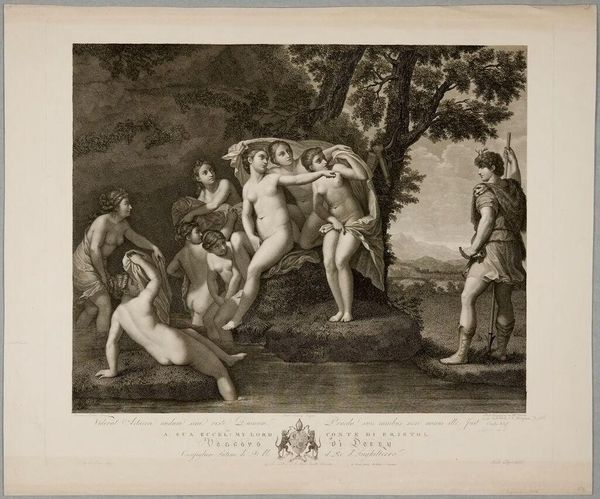
print, etching, engraving
#
allegory
#
baroque
# print
#
etching
#
landscape
#
classical-realism
#
figuration
#
italian-renaissance
#
engraving
Copyright: Public domain
Curator: This is "Apollo and Hyacinthus" by Giovanni Battista Piranesi. The dramatic landscape almost overwhelms the figures in the foreground. What are your initial thoughts? Editor: It feels like a stage! I'm really drawn to the lines – the sharp contrast between light and shadow. How did Piranesi achieve such detail with etching and engraving? Curator: It's fascinating to consider Piranesi’s material practice, isn't it? The copper plates themselves were products of resource extraction, weren't they? And each line, each carefully considered scratch on that plate, speaks to the artist’s labor, to his engagement with tools and the social contexts of printmaking. Does knowing that alter how you see the image? Editor: Absolutely. It moves beyond just being a scene of mythology. I hadn't thought about the labor involved in creating it. Did the mass production of prints like this democratize art in any way at the time, by making it accessible to more people, and did that threaten conventional standards and traditions? Curator: An interesting point to consider. Certainly, printmaking offered a wider audience than unique paintings could reach, impacting artistic value. Perhaps that ease of access influenced perceptions and traditional notions tied to the "fine arts.” What are your thoughts? Editor: That's incredible. I hadn't considered the material conditions influencing art of the period. I guess there's more than meets the eye, even with engravings! Curator: Precisely. Understanding the 'how' can open up a whole new perspective.
Comments
No comments
Be the first to comment and join the conversation on the ultimate creative platform.

